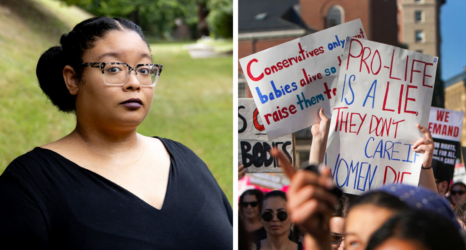On Dec. 3, the Supreme Court of the United States began hearing oral arguments in Peggy Young v. United Parcel Service, Inc., a case that will affect pregnant workers across the nation. While a decision is not expected until June 2015—and the current Supreme Court has gained a conservative reputation—even opposing groups, such as pro-choice and anti-choice organizations, have miraculously united to champion pregnant workers’ rights with the hope that the Supreme Court will do the same.
This case will determine whether or not UPS violated the Pregnancy Discrimination Act (PDA) by forcing former employee Peggy Young onto unpaid leave in 2006 after she became pregnant. She gave a doctor’s note to her employer recommending that she not lift anything heavier than 20 pounds while pregnant; her job description required her to be able to lift up to 70 pounds. But instead of being assigned light-duty work, which UPS gives to temporarily disabled or injured workers (UPS has even accommodated workers who had their drivers licenses suspended for DUIs), Young was offered no such accommodations and was forced out of her job, causing her to lose her medical insurance in addition to her pay. (UPS has since changed its policy to accommodate pregnant workers, but the Supreme Court’s decision will impact all working women who become pregnant.)
As the highest federal court in the United States, the Supreme Court is deciding more than just the case between Young and UPS; it’s deciding a case between employers and pregnant workers across the nation. It will do this namely by interpreting the meaning of the PDA, including the part that claims pregnant workers are entitled to be treated the same way in the workplace as non-pregnant employees who are “similar in their ability or inability to work.” According to Lyle Denniston on the official SCOTUS blog, “There did not appear to be a consensus on the meaning” of that section of the PDA among the justices during the Dec. 3 hearing.
The justices’ uncertainty could sway their decision either way. If they decide that pregnant workers should not be treated as if they are “similar in their ability or inability to work” to non-pregnant workers (for example, workers who have been injured on the job), then in the future, employers can use that as a reason not to accommodate pregnant employees. If the justices lean the other way, employers will not be allowed to deny accommodations to pregnant workers if they accommodate non-pregnant workers with similar abilities and limitations.
Though the justices themselves were uncertain about aspects of the PDA, New York attorney Caitlin J. Halligan, who serves as UPS’s lawyer, seemed to meet quite a bit of opposition from Justice Elena Kagan. Denniston wrote that Kagan “said that UPS’s interpretation [of the PDA] essentially deprived the equal-treatment mandate of any real meaning.” Also, USA Today quoted Justice Ruth Bader Ginsburg as saying, “No one who wanted a dispensation didn’t get it, except pregnant women.” These points are not reflective of the entire hearing, but they may be a sign that the justices will rule in favor of equitable treatment for pregnant workers.
Numerous organizations have come out in support of pregnant workers and Young: an amicus curiae brief sent to the court and signed by organizations including the American Civil Liberties Union condemned UPS’s treatment of Young and highlighted the discrimination faced by pregnant workers that “Congress sought to avert with the passage of the PDA more than 35 years ago”; a group of supporters rallied on the steps of the Supreme Court on Dec. 3, while Young and UPS’s lawyers gave their oral arguments inside; and Vivien Labaton and Tracy Sturdivant, co-directors of the Make it Work non-profit, released the following statement in an email:
To deliver justice, the Supreme Court needs to rule in favor of Peggy Young. It’s clear that if UPS was willing to offer light-duty accommodations to employees injured on the job and to disabled workers, those same accommodations should be afforded to pregnant women. Instead, they grouped pregnancy with ‘injuries that are willfully self-inflicted or incurred during the perpetration of a high misdemeanor.’ Asserting that pregnancy is a self-inflicted injury is absurd, and punishes women who are working to support their families. Our workplace policies need to sprint to catch up with today’s realities, which include the fact that women are nearly half the workforce. In the 21st century, women—whether they are pregnant or not—make invaluable contributions to our workplaces and our economy.
Not only is the number and diversity of organizations supporting Young in this case remarkable, but a poll conducted by The Feldman Group and commissioned by the Center for American Progress found that 79 percent of Americans believe that the Supreme Court should rule in favor of Young. Who knows what that number would have been in 1978 when the PDA was first enacted, but the public opinion is clear now: Pregnant workers deserve equitable treatment and it’s time for the Supreme Court to make it the law of the land.
Photo courtesy of the National Women’s Law Center.
READ MORE: The Woman Who’s Making a Difference for Pregnant Workers





